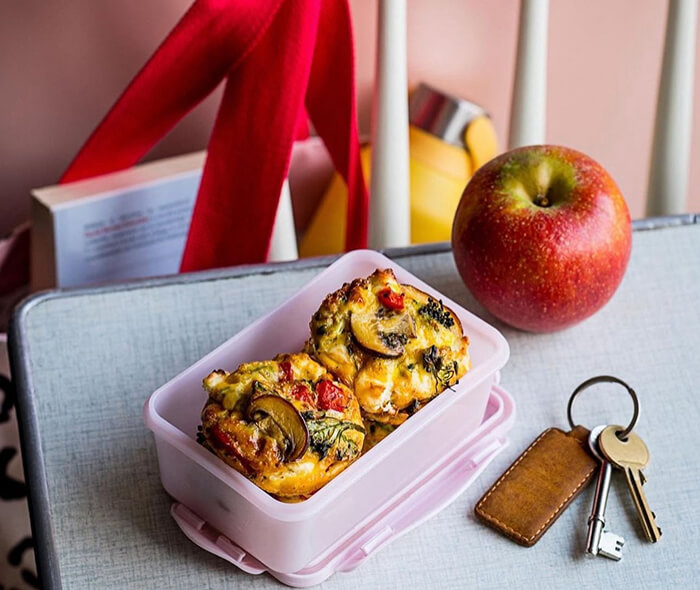Five health hacks from the Glucose Goddess
New York-based French biochemist and New York Times bestselling author Jessie Inchauspé is a standard social media go-to for hacks on managing sugar spikes and diabetes. She has 87.6 million views on YouTube @GlucoseRevolution, and 4.9 million followers on Instagram @glucosegoddess.
Inchauspé, a BS Mathematics graduate of the King’s College London, also holds a master’s degree in biochemistry from Georgetown University. She started her Instagram account, where she shared graphs of her continuous glucose monitor data in 2019 to help educate the public on nutritional science.
She released her debut book, Glucose Revolution: The Life-Changing Power of Balancing Your Blood Sugar in 2022 with more than one million copies sold worldwide. A follow-up book, The Glucose Goddess Method, was released a year after and landed on The New York Times Best Seller List.

Here are five of her most popular hacks:
Eat food in the right order: Fiber or vegetables first, then protein and fats, carbohydrates and sugars last. “Scientists discovered that if you eat the veggies first during a meal, then the proteins and the fats, and then the carbs (the starches and the sugars), then you can reduce the glucose spike of your meal by up to 75%. If there’s a clear separation between the elements in the meal, have the veggies first, then the meats and the fats, and then leave the carbs, like the rice, the pasta, the potatoes, the bread, and the dessert obviously, leave those for the end of the meal,” she said in her YouTube video.
“The reason this hack works is because veggies, when we eat them first, they create a powerful protective mesh in our intestine. Thanks to all of the fiber they contain. This mesh then slows down how quickly glucose molecules from carbs coming later can make their way to your bloodstream. You don’t have to change what you’re eating, how much you’re eating, just change the order and see how much better you feel.”
Add a veggie starter to your meals. “The veggie starter hack harnesses most of the power of the food order hack and is a bit simpler to implement. You simply add a plate of vegetables at the beginning of your meal and this can be raw vegetables or cooked vegetables. You can add dressing to them, you can add sauce, you can add some cheese. Then, after your veggie starter, eat whatever you usually eat. The glucose spike of your meal is going to be much smaller than if you didn’t have the veggie starter.” The easiest veggie starters are ordering a side salad at a restaurant, having some cucumber slices, some cherry tomatoes. Your veggie starter should ideally make up about 30% of the overall volume of your meal.

Start your day with a savory breakfast composed of protein, fat, fiber, optional starches, nothing sweet except optional whole fruit. “This is probably the most difficult hack for a lot of people but also the most powerful hack to start with. If you’re feeling adventurous and you really want to see quick impact, I highly recommend you start with the savory breakfast hack. In the morning, most people these days have mostly starches and sugars. You eat a bowl of cereal and orange juice or some bread with jam on it or granola with banana and honey, mostly starches and sugars that are a big, big, big glucose spike in the morning.
The problem with this is that if you have a big glucose spike in the morning, your hunger levels are going to come back up way more quickly and your energy is going to be out of whack for the whole day. With a big glucose spike at breakfast, you are hurting your mitochondria. Your mitochondria are the little factories in your cells in charge of making energy and a big glucose spike hurts them, prevents them from making good energy for you to be able to do the stuff that you want to do.
“A savory breakfast should be built around protein. Sure, it can be eggs, but it can also be Greek yogurt, it can be nuts, it can be leftover meat or fish from your dinner, it can be tofu, it can be protein powder in a smoothie, etc. Then add some fat, add a little bit of fiber. Then you can have some starch in there, so a little bit of bread, some potatoes but importantly, a savory breakfast should contain nothing sweet except if you want whole fruit for taste.”
Drink a glass of water with one tablespoon of vinegar, ideally 20 minutes before a meal. “When I first discovered the science, I was quite surprised and taken aback. I thought, okay this is maybe just another social media weird fat thing but actually, there are some really good clinical trials showing us that one tablespoon of vinegar in a tall glass of water before a meal can reduce the glucose spike of that meal by up to 30 percent without needing to change what you’re eating.
“Vinegar contains acetic acid and acetic acid is a very cool molecule that slows down the breakdown of carbs in our digestive system. Slowing down how quickly carbs are going to go from our mouth to our bloodstream is the whole point. We’re trying to reduce the amount of glucose we’re giving to our body and reduce how quickly that glucose is arriving in our bloodstream with all the hacks.
“Any type of vinegar works. The most popular ones being apple cider vinegar, white wine vinegar, rice vinegar, cherry vinegar. Whatever you want, the only one I would recommend you avoid is the very syrupy balsamic glaze, the sort of Italian aged one, because that one has quite a bit of sugar in it so it might negate the positive effects. A question I often get is, if I don’t want to drink the vinegar, what can I do? Well, you can use it as dressing on your veggie starter! That’s a great combination of two hacks!”
Move after you eat. “What do I mean by after you eat, move? Well, every single cell in our body uses glucose for energy so if you sort of shake your fingers, your finger cells are going to be burning glucose in order to be able to contract and make this movement. So the more and the harder a muscle is told to contract, the more glucose it’s going to need in order to do so.
“We can use this to our advantage and here’s the hack, after one meal of your day, use your muscles for 10 minutes. Within 90 minutes, after the end of your meal, move, get up and go for a 10-minute walk. You can clean your apartment. You can walk your dog. You can do your laundry. You can do the dishes. If you’re sitting down, you can raise your heels up and down. You can do this under your desk, you can put a little timer for 10 minutes. Even during a meeting, nobody will know and you’re going to be helping your glucose levels and your body through this very simple movement.”


